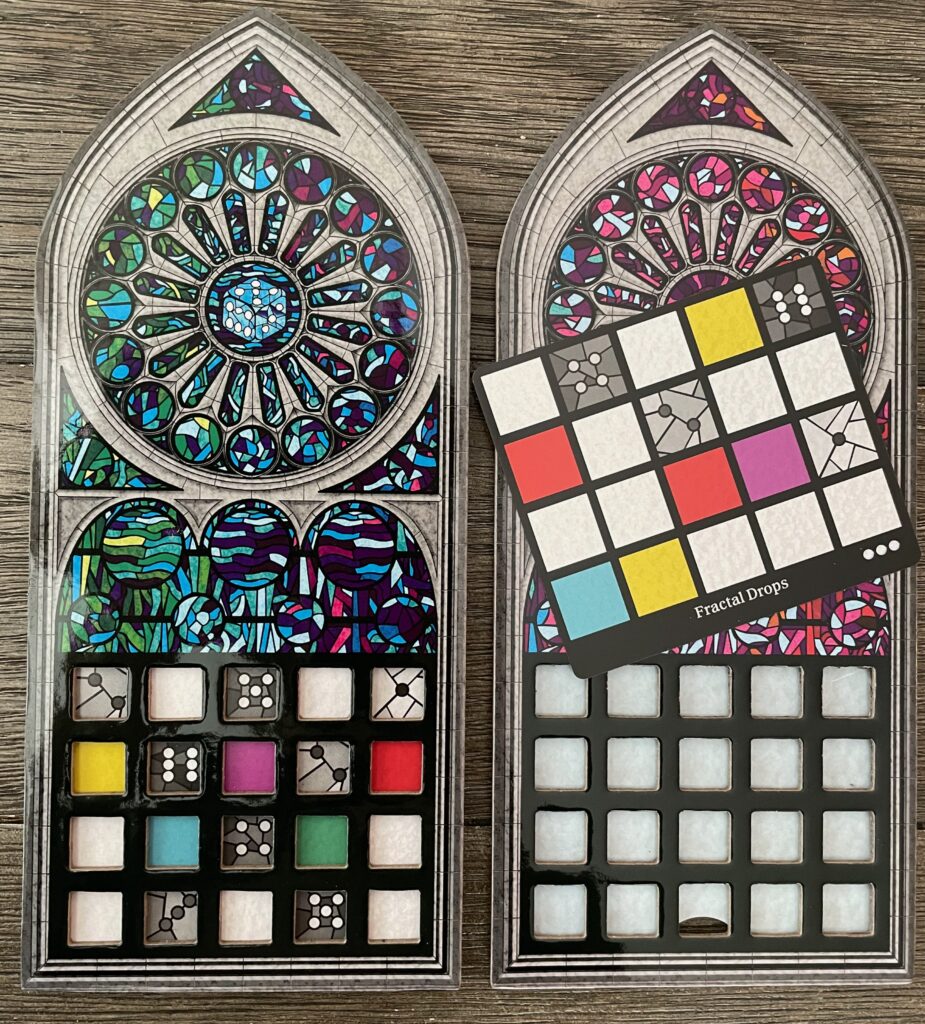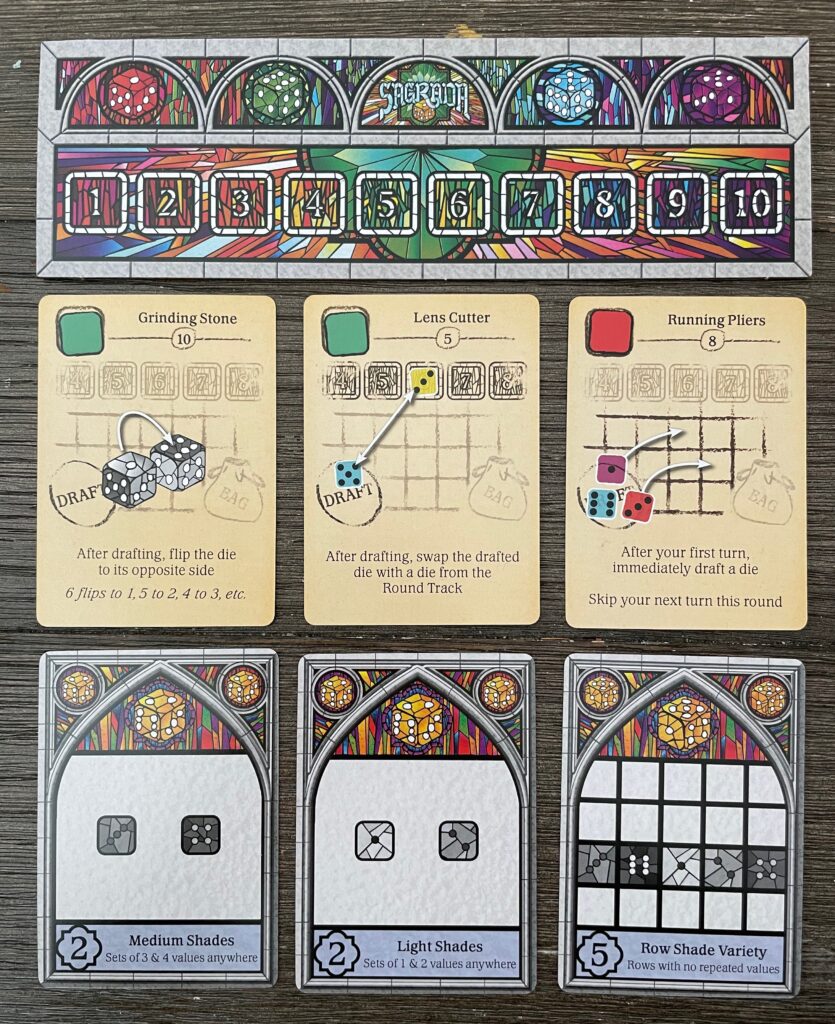A big box of colorful dice is what you’ll get with Sagrada. It’s an easy to play, strategic and puzzly board game created by Daryl Andrews and Adrian Adamescu. I had a hunch this would be a great game for our family. Yes, it sat on the shelf for quite some time before we got to play it, but let’s find out if the wait was worth it!
What’s Sagrada all about
In Sagrada, you’ll play as a glass artist whose goal is to create a stunning stained glass window. Players will draft colorful dice and place them on their window shaped player boards to complete their masterpiece.

Gameplay
Sagrada is played over 10 rounds. At the beginning of each round, the starting player will draw dice from the bag and roll them. Players will take turns in clockwise order until the last player is reached. The last player will take a second turn, and then play continues in counter clockwise order until the starting player takes a second turn to finish the round. The starting player position rotates to the person on the left, and the next round begins!
On each turn, a player can do 1, both, or neither of the following things:
- Draft a die from the pool: Simply select the die you’d like to draft and place it on your player board.
- Use a tool card: Use a favor token to gain the advantage on an available tool card (see below for examples).
Wining Sagrada
At the end of the game, you’ll flip over the round tracker. On the backside of the board, there’s a score track. Use each person’s score marker to keep track of points as you count them! Let’s take a look at a few ways you’ll be able to score those victory points during the game!
- There are 3 public objective cards. These may score you points if you have the right colors in a row or column, or even specific sets of numbers (see below for some examples).
- Everyone has a private objective card. These will score you points for the values of dice of a specific color.
- You’ll get 1 point for each favor token you still have at the end of the game.
- If you have any spaces in your window that haven’t been filled at the end of the 10th round, deduct a point for each one!

Our thoughts on Sagrada
We’ve had a great time with Sagrada so far. I’m sad it took us so long to get this poor game off of the shelf of shame. It’s worthy. It’s a wonderful game to play with kids. I love to pull out Splendor to play with people new to the hobby, but Sagrada is excellent for this purpose. Let’s take a look at some pros and cons!
Pros:
- The rules are simple to learn. This makes it perfect to play with newer gamers, or gamers who are resistant to heavy games.
- Strategy is easy enough that kids can understand it and execute it successfully.
- Setup and takedown is quick and painless.
- Gameplay is quick.
- It’s fun creating the stained glass windows out of colorful dice.
Cons:
- While there’s a good number of stained glass cards, there’s not enough objective cards. And some of the objective cards I don’t particularly care for.
- Like most puzzly games, Sagrada can trigger some analysis paralysis.
Expansions
There was a time when I regularly would buy expansions for the board games I added to our collection. This was particularly true of the games I backed on Kickstarter. I realized at some point that many of the expansions were collecting dust. So I don’t buy a lot of expansions anymore. For Sagrada, I’m making an exception.
We currently own the 5&6 player expansion for Sagrada. There are also 3 expansions for this game that make up the Great Facades collection. Each adds some things to Sagrada which will improve variability and replayability. It’s only a matter of time until we start adding these to our collection too!





One thought on “Sagrada Board Game Review”
Comments are closed.